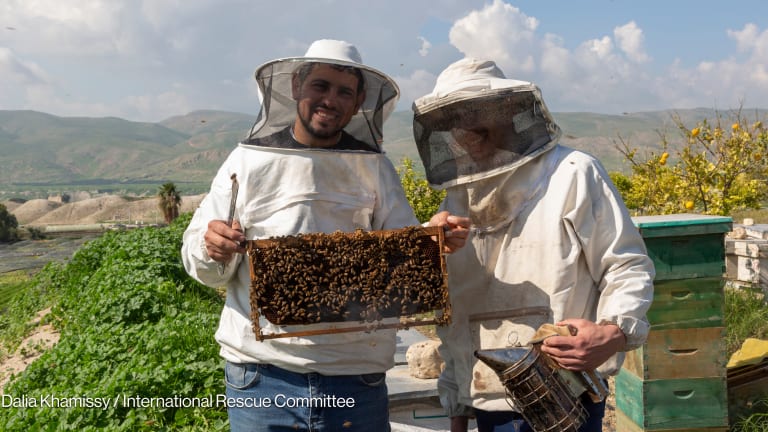
With the proliferation of user-generated content online and music artists who can have a popular single despite no radio play, one may be forgiven for thinking that it’s a fairly straightforward task nowadays to raise awareness. However, competition for attention is greater than ever — and it still stands that without news coverage of an issue or crisis, there may be little knowledge or awareness of it among the public.
As international NGOs, part of our role is to help influence and shape what is broadcasted so we can bring our insight and experience to the viewers at home about events in a given country. From a practical perspective, we can also raise the profile of events in order to influence the policy agenda to change lives for the better and generate crucial funds.
We rely on our relationships with journalists and their editors, yet sometimes these relationships can be tricky. We hustle, we cajole — on both sides. NGOs work to influence editors and producers that a topic is worth their time, editors provide direction to journalists based on what they know their audiences want, and correspondents constantly have their ear to the ground working out what the next big story is and where they need to be.
Sometimes, it can seem there is a disconnect — with journalists feeling they are being used primarily for marketing or fundraising purposes with the perception that NGOs are acting out of self-interest, while on the other side, NGOs may think the important stories aren’t always being fully told.
But instead of engaging in a debate over who owns the media narrative, we need to be asking ourselves how we can work together to create a more productive relationship between NGOs and the media to better tell the intricate, less covered stories. A relationship where journalists are truly independent to report on a context, notwithstanding that access, information, and support might come from an NGO. And, where NGOs can be open about risks and complexity.
In a media world that is heavily reliant on advertising revenue and when clicks denote interest or engagement, a strengthened relationship between NGOs and the media would enable the telling of lesser known and, at times, surprising stories.
This also creates more opportunity for the voices of the people most affected by these stories to be heard. Examples include highlighting the little covered situation in Central African Republic, where one-quarter of the population is displaced or refugees. Or more hopeful stories, such as the signing of national resource sharing agreements two months ago between communities in Karamoja, northern Uganda, to help them live peacefully in formerly contested areas of conflict. Or even the success of a woman called Faith in finding a job through a startup online-job placement platform in Kenya, where limited opportunities and a largely informal work market make it difficult for young Kenyans to find employment.
Having just returned from the horrendously confined Gaza, it’s concerning to see the lack of coverage the situation receives in Europe. Apart from briefly some weeks ago when there was a dramatic increase in violence, for the large part, Gaza barely appears in mainstream media.
Palestine can be polarizing. In the longest running topic on the United Nations docket, you’d be hard-pressed to find someone who doesn’t have a view on the conflict. However, coverage of the humanitarian situation and the multifaceted nature of the realities inside Gaza is oftentimes woefully inadequate. It generally takes a big escalation in the conflict to make it seem newsworthy.
It is another example of a context where NGOs and journalists need to work better together to enable the voices, difficulties, complexities, and opportunities from such a context to be more widely heard, known, and understood. There are opportunities in Palestine that also allow for a different story to be told. Unexpected stories of hope and resilience from the center of a conflict zone, such as the $1 million in income that has been brought in by freelancers and coders supported by the startup incubator space, Gaza Sky Geeks.
Journalists have increasingly large portfolios, and one-third of them globally are publishing more than seven articles a week, I recognize that in many ways, it is more difficult than ever to find a way to secure sustained, consistent coverage of a crisis. But I also know how important this is if we are able to change perceptions, change policies, and change lives — in Gaza, along with so many other marginalized and fragile contexts.
This year, with the resurgence we’ve seen in news engagement and trust in traditional media — according to the Edelman Annual Trust Barometer, trust in traditional media is at 65%, its highest ever level — it is time to usher in a renewed relationship between the media and NGOs. One that is curious and questioning and trusting, and that takes risks to tell the stories that need telling.








